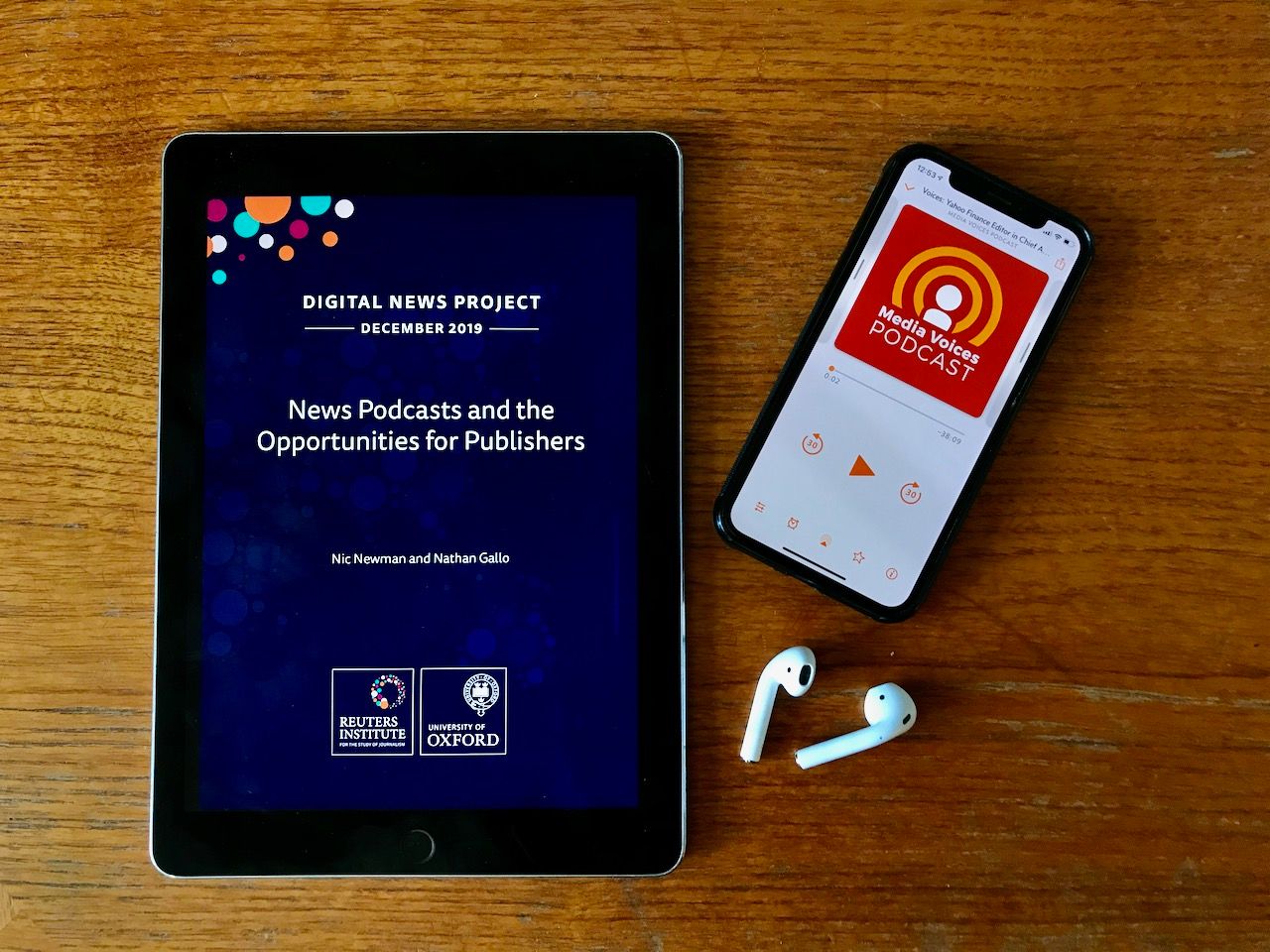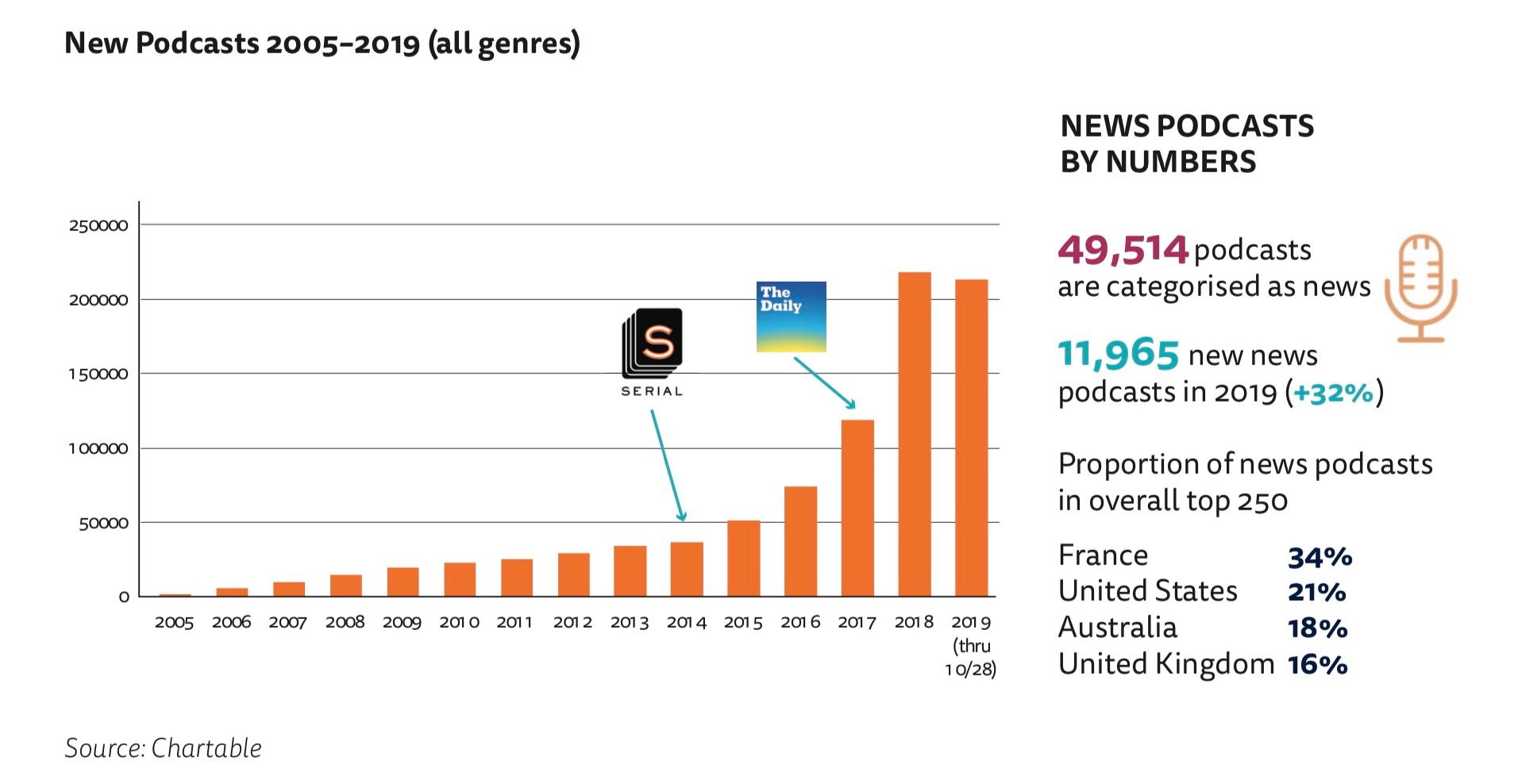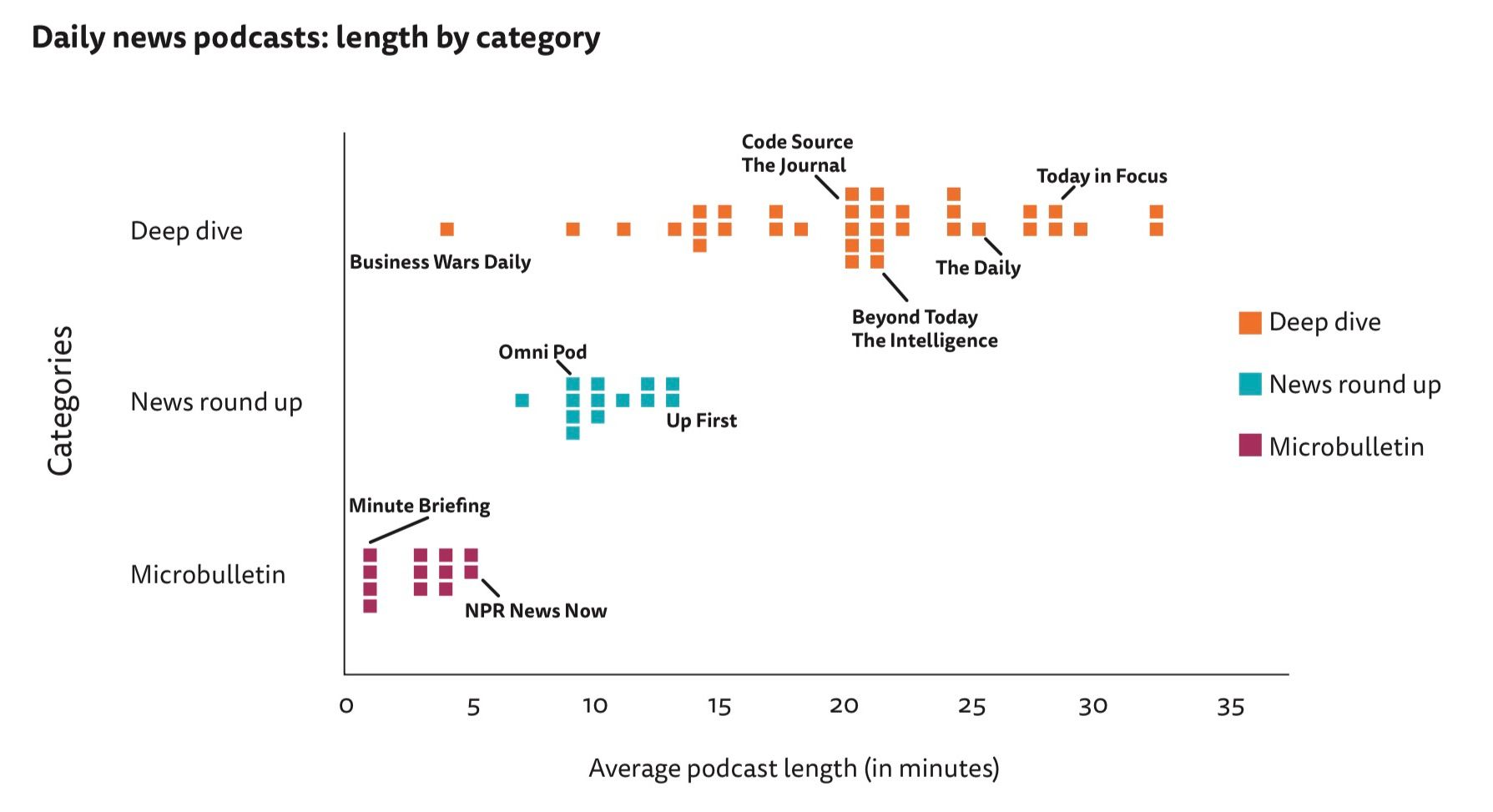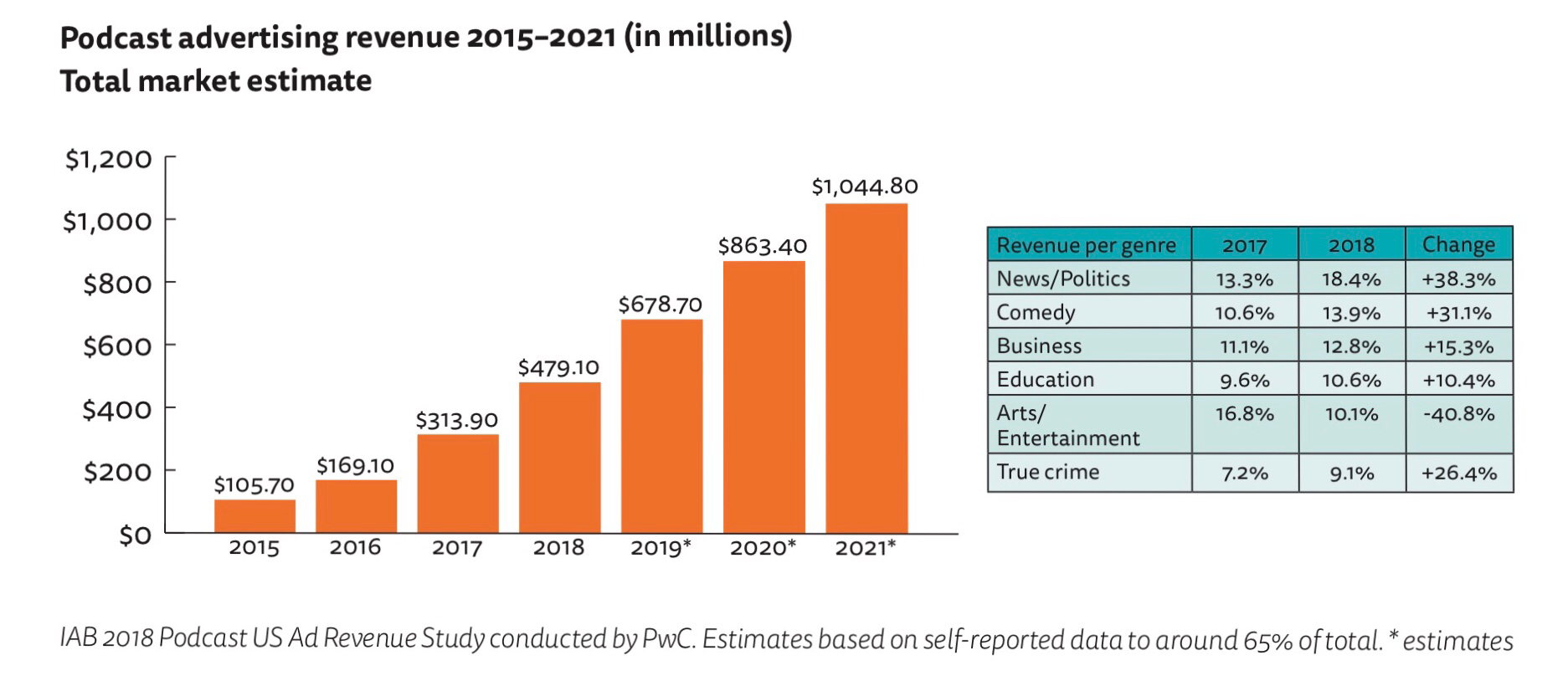
News podcasts: profitable and engaging — but have we got the format right?
New research from the Reuters Institute suggests that publishers are waking up to the opportunity for greater audience engagement through podcasting - but are they taking the right approach?
Podcasts are, without doubt, the most impressive 15 year old overnight success story of the past couple of years. To hear some people talk, you’d think that podcasts have emerged, fully formed around the mid-point of the decade — probably around the time they first heard Serial. And that’s how you get idiocy like The Guardian promoting its “first ever” daily news podcast, to the annoyance of people who ran one a decade before.
Happily, this time around the Reuters Institute are doing the solid work of capturing and documenting the new era, so it isn’t lost to the vagaries of the falliabel intutaionla memory of publishing companies. The report, News Podcasts and the Opportunities for Publishers, released today, takes a deep dive into the news podcasts of five countries:
- the United Kingdom
- the United States
- Australia
- France
- Sweden
What is a “news” podcast?
The study used self-declaration by publishers in Apple’s Podcast directory to define them - if they were categorised as News & Politics, they counted:
News podcasts make up a small proportion (6%) of the 770,000 existing podcasts, as categorised by Apple, but the general appeal and stickiness of news content means that the category punches well above its weight in terms of consumption. News makes up around a fifth (21%) of the most popular episodes in the United States Apple charts.
Not surprisingly, given the outsize popularity, the number is growing rapidly, as more publishers follow the leaders onto the bandwagon (that’s been rolling for 15 years…)
The number of new news podcasts globally rose by almost 12,000 between January and October 2019 – an increase of around a third (32%) according to data provided by Chartable.
Let’s have a look at that:

(You might want to note that podcasts have actually been on a steady rise since 2007, long before the Serial moment. What could have happened in 2007 that changed the dynamic of the whole market…?
😇📲
Ineterstingly, though, interest in news podcasts still seems to be lower than it was during the first coming of podcasts, back in the mid-2000s:
Now, of course, that might be distorted by the fact that a proportion of searchers go straight to their podcast app to search, not the web. But it does suggest that the industry has been very slow to capitalise on interest that has been there for a very long time, after an intial, abandoned flirtation - and it took a couple of big hits before we took notice again.
Does length matter?
The report spends a lot of its word count examining the emergent phenomenon of daily news podcasts, which it categorises by length:
- Micro-bulletins, with a length of between 1 and 5 minutes.
- News round-ups, with a length of between 6 and 15 minutes.
- Deep-dives, with a length of 20 minutes or more.
That surprised me - I had a quick look in my podcast app of choice (Overcast), and only a tiny handful of my podcast subscriptions were down at that length:
- Robot or not - comedy podcast in which a well known tech podcaster explains his definitions of things. (circa 2 to 7 minutes)
- Coffee House Shots - Spectator daily podcasts series (circa 10 minutes)
- Micro Monday - a self-described “microcast” for the micro.blog community (I was interviewed on it a few weeks ago…) (circa 20 minutes)
Everything else powers well over 30 minutes. That actually shifts the perspective of the report somewhat. I found it deep and useful on these shorter form podcasts, but frustrating vague in places about the longer form podcasts.
To some degree this is more a report on daily breaking news podcasts than podcasting in general.
Is shorter better?
It’s interesting that “shorter is better” has become accepted wisdom in the journalism community, based both on the focus in this report, and what I'm hearig from people considering or experiementing with podcasts in the industry. I’m not sure that there’s good evidence for that. With the proviso that anecdote is not data, I generally find shorter podcasts irritating, because I tend to listen to them while commuting or walking places, and stopping to switch to a new podcast every five to 10 minutes is a recipe for a quick unsubscribe.
This issue is only just touched on in the report. For example:
Our research shows that many publishers from print or digital-born backgrounds have focused on single-subject deep-dives that play to their strengths in analysis and explanation. Print journalists have enthusiastically embraced these new forms of storytelling, finding them a natural add-on to existing workflows. By contrast, many broadcasters have focused on producing micro-bulletins and redistributing existing radio programmes as podcasts. Where they have commissioned digital- born or native podcasts, these have often been aimed at younger and more diverse audiences that they are finding hard to reach through linear channels.
It seems likely that many publishers are trying to bend the podcast model to their own expectations, rather than letting the new medium shape their storytelling. If I was feeling mischievous, I might suggest that the journalist obsession with news above all is causing them to impose a format onto podcasts that it is ill-suited for.
Even the much-heralded The Daily podcast from the New York Times sits at around 25 to 30 minutes, which puts it squarely into the deep dive category in the report:

I tend to put the Ezra Klein-style podcast, that often go well over an hour, into a mental deep dive category. I suspect that if Nic Newman and Nathan Gallo ever revisit this research, there is some useful work to be done in exploring the differences between the 25 to 30 minute podcasts and the hour-plus ones, which are less deeply explored here.
There’s almost certainly a diversity of audience needs, listen occasions and subject matter at work here, that the industry risks missing out on if the “20 minutes news” podcast becomes adopted as a de facto standard without greater experimentation around length.
Podcasts are a secondary medium - we listen to them while doing other things. I wonder how many of the people producing these shorter form podcasts have given thought to when in people's lives they fit in?
Prediction: the short, daily news podcast space will become fiercely competitive, with a few big winners. Journalists alway over-estimate people’s hunger for the latest news, and this will only end up being a limited proportion of the addressable podcast markets.
Supplementary prediction: A more intuitive way of getting news bulletins through smart speakers might well change the dynamics of this (but, technically, they would no longer be podcasts…)
Never mind the length, feel the tone
Others, though, are exploring and considering the tone of this new(ish) medium:
Marguerite Howell, co-editor of The Intelligence at The Economist says it is not just about the way shows are constructed, it is also about tone: ‘It’s much more intimate, where sometimes with the radio it’s as if you’re being assaulted.”
That’s a critical point. Most podcasts have avoided the mistake of the early video efforts of just trying to replicate traditional formats through a new delivery method. I have a YouTube playlist somewhere of uncomfrtable and sweating regional journalists perched on desks trying to be news readers…
Podcasts do have a tone all their own. Something more relaxed, more conversational. There’s something deeply intimate about letting the same set of voices into your AirPods every day or week. It builds a connection — and quite possibly a habit. Don’t underestimate the power of habit formation around podcasts. Establishing a regular slot for yourself in people’s life is a huge audience engagement win, and it’s an issue only giving nodding mention in the report:
You can see consumer habits changing to include audio more in daily routines,’ says Chris Duncan, Managing Director of The Times and Sunday Times. ‘It feels like a positive opportunity but also it’s a threat for attention – so it’s a place that we have to be.’
It’s arguable that it’s less about consumer habits changing, but instead providing reporting in a format that suits consumer’s existing habit. We reduce our dependency on reaching them through screens and extend our reach into areas of their lives where they are doing other things: driving, commuting, running, gardening…
Daily news podcasts are not just delivering reach, they are also bringing deeper engagement. Private data from publishers show that listeners come back several times a week and listen to the majority of each show – completion rates tend to be between 60% and 90%. This suggests engagement times of more than an hour per podcast user per week, which compares extremely favourably to a few minutes a week for the average website visitor.
Yes, but it’s still a bit less impressive that Ezra Klein, who manages to get about 90 minutes off me a week for his excellent interview series.
This is clearly not an either/or choice. But I wonder if we’re not seeing the formative stages of a split much like we saw with written content: that an early obsession with quick, high reach content will eventually open up an increased focus on in-depth, long-form content, with much higher engagement levels.
The danger is that that space is already well-occupied by the independent producers.
Audio journalism for the harried
But it’s critical to realise that podcasting opens up whole new spaces for journalism, because, unlike most of the other forms we publish, it is a secondary activity. The Zetland (previously) example is instructive here:
Zetland has invested in a number of other podcasts as well as live shows linked to the journalism. All articles are now read by journalists and these options are prominently displayed in the app. Zetland’s research shows that audio stories and podcasts are easier to consume for people with busy lives. This has helped reduce churn amongst members – especially time-poor young professional parents.
They've been clear in the past that the audio versions of the story often outperform the text version.
Underlying this whole boom is the idea of occupying much more of our audience attention, by releasing it in a form that is more respectful of their own time. I can commit to hour or two with, say Vox because I’m doing it while driving, for example. It would be much, much harder to carve out an hour a week to read the site.
Money talks
So, how about the business model question? Here, the report is pretty comprehensive. Let’s just have a quick look at this graph from the report:

That enough for you? No? OK, how about this:
Podcasting will make around half of Slate’s entire revenue by the end of this year, up from 28% in 2018.
Or even this:
The bulk of this revenue is advertising, but podcasting also contributes heavily to its Slate Plus membership programme, which boasts 60,000 members. ‘The strongest connections that we have to our audience are very often through the podcast and the strongest set of benefits through Slate Plus are associated with the podcast,’ says Gabriel Roth.
Or perhaps this?
News is the biggest and fastest-growing area of spend, with growth of 38% during 2018. In the UK, agencies that sell podcast advertising say there has been a real turnaround in the last 18 months due to rising consumption, the growing amount of quality content, and data which show how podcasts resonate with hard-to-reach younger demographics.
The business case is comprehensively proved - if you can find an audience. And that’s where the skill comes in. Finding that audience involves finding the perfect intersection of:
- content
- length
- tone
- host
- timing and frequency
And that's what we still need to know more about.
In conclusion
This is, as you might expect, a useful and deep piece of work from the Reuters team. If I take issue with anything, it’s the conclusions. For example:
>But have we reached peak podcast? Most of those we talked to felt there was still considerable room for audience growth while new technologies like voice and on-demand platforms in the car will make audio easier to access than ever before.
I know the question has to be addressed, because people keep asking it. But should we be asking it? Do we ever ask ourselves if we have reached peak text? This is symptompatic of an attitude that podcasting is still an add-on to what we do, rather than an integral part of it. But if people spend more time listening to the podcast than reading the site — which is more critical?
I think this is a portrait of an industry that has, rather belatedly, woken up to a technology it could have been using for years before it has. The real inflection point for podcasts wasn’t Serial back in 2014, it was a decade ago, when mobile phones supplanted the iPod, and downloading podcasts got a whole lot easier.
At the moment, too many publishers are just cloning the approaches of the pioneers, rather than exploring the lengths, formats and tones that work for their individual audiences. Podcasts need to fit into the rhythm of people’s days, and that changes from one social, professional or interest group to another. Taking a “off the shelf” concept won’t necessarily deliver the result you want for everyone. And we’ll see some high-profile efforts fail because they fail to address the critical points I listed above.
I’d really like to see this work revisited in 18 months to two years, to see how the market has developed in that time. My gut feeling is that it will be significantly more sophisticated than we’re seeing right now.
Sign up for e-mail updates
Join the newsletter to receive the latest posts in your inbox.









